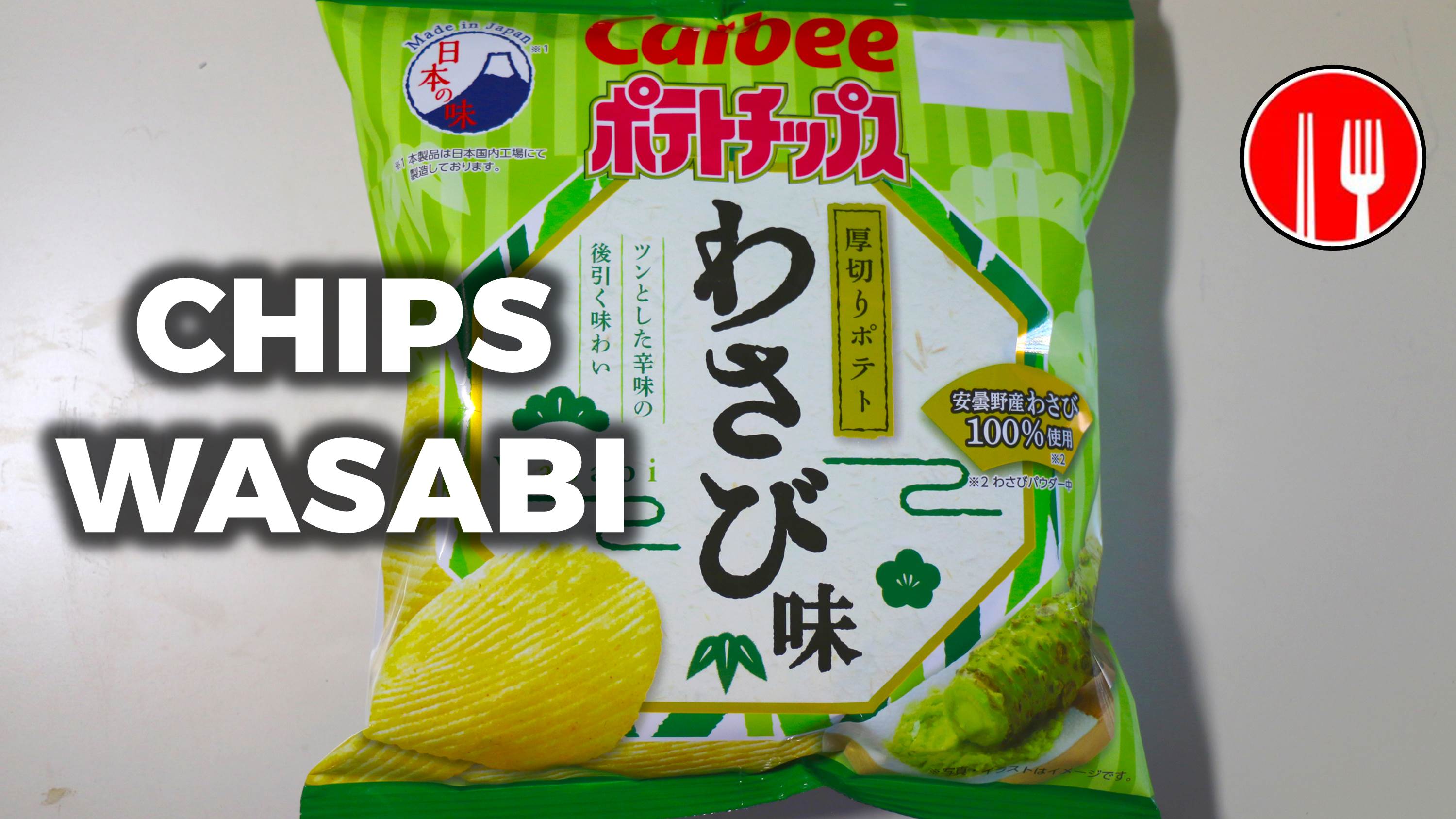Onbashira is a Shinto festival that celebrates the rebirth of Suwa Taisha, the Great Temple of the city (it consists of 4 temples). The towns around the Lake Suwa meet every 6 years to replace the Honored Pillars of the temples, the Onbashira . These Pillars are actually large tree trunk cut in the nearby mountain and arranged around the temple. These giants measures are 16 meters long, 1 meter in diameter and their weight a dozen tons.
History
Processions of Onbashira began there nearly 1,200 years ago and continued uninterrupted until today. Every 6 years (the years of the Tiger or Monkey according to the Chinese calendar) is held the festival of Onbashira. You will often hear the Japanese say that it takes place every 7 years because it is a Japanese custom to include the current year. Onbashira lasts several months and is done in 2 stages: Yamadashi in April and Satobiki in May.
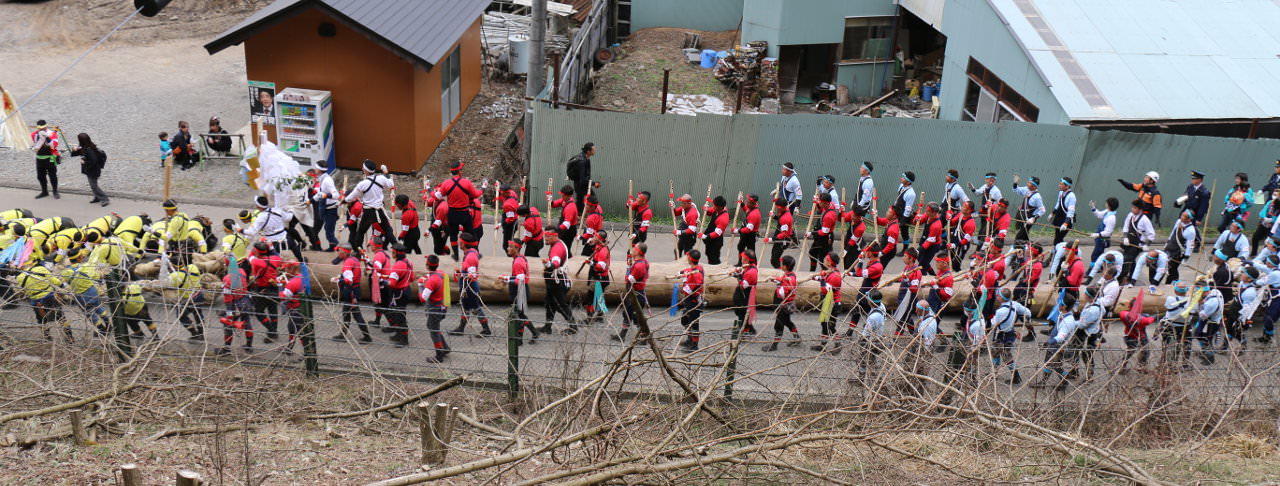
Yamadoshi
Yamadoshi consists of the stage where the different towns around the lake gather in teams to cut logs and drag it down the mountain. The trunks are attached by ropes and pulled for kilometers. It is a procession that lasts several days as they drag down 3 to 4 trunks daily. It is also when the ceremony of Kiotoshi (meaning tree fall) takes place. Thus, to demonstrate their bravery and courage, men from neighboring towns straddle the tree trunk when descending a very steep slope. This event is followed by thousands of onsite spectators Japanese and foreign. Tickets are available to see the descent from the stands. There are hundreds of participants to pulling the giant trunks and some streets are blocked to traffic. When we arrived on Friday morning at the Shimo-Suwa Station, tickets were sold out. Fortunately, we got lucky. With a little persistence, we managed to squeeze just before the downhill slope in the middle of the participating teams (even if the police were leading the people to the side of the slope behind their security ropes ). Preparation for the descent is very long. It takes time to pull the tree trunk until the beginning of the slope and before descending several religious songs follow each other for more than 10 minutes. The descent itself takes only a few seconds. It is very dangerous, there are every year many injuries and sometimes deaths (although this is rare). Those who manage to follow the trunk the way down, are fighting for the ride once it is stopped.

Tickets to sit in the stands to watch the descent of tree trunks are for sale from 1 February. The number is limited and can be in a lottery for some of these. It is imperative that you check it in advance.
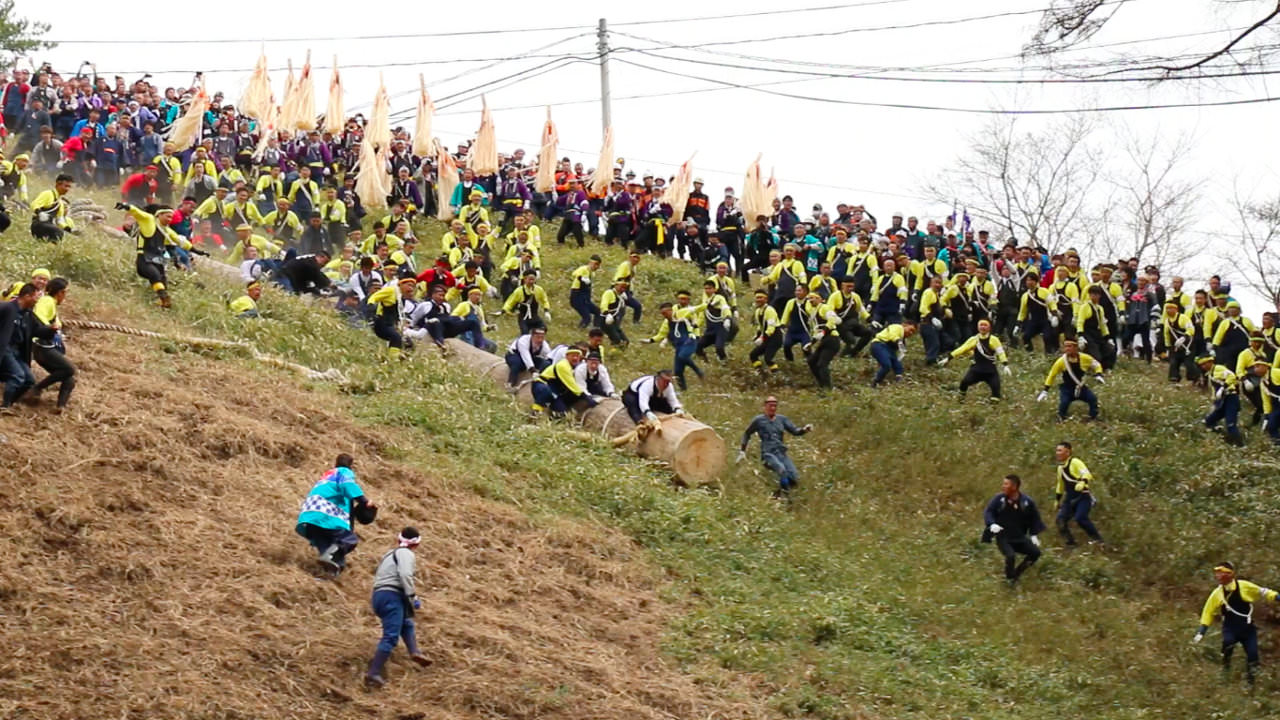
Satobiki
Satobiki is the procession that involves the replacement of old by new Pillars. The trunks of trees as a support function to the foundation of the Temple, are raised by hand by holders teams. Like any Shinto procession, it is accompanied by religious songs and cheers by all participants and spectators.
Here's how the festival Onbashira takes place . You have to see it to believe it. So go see by yourself the incredible procession and perhaps participate ... Why not? The next is in 2022 :)
TipsAs you can imagine, the hotels are all also booked well in advance. You will probably prefer book with payments later and free cancellation fee given the uncertainty of dates.
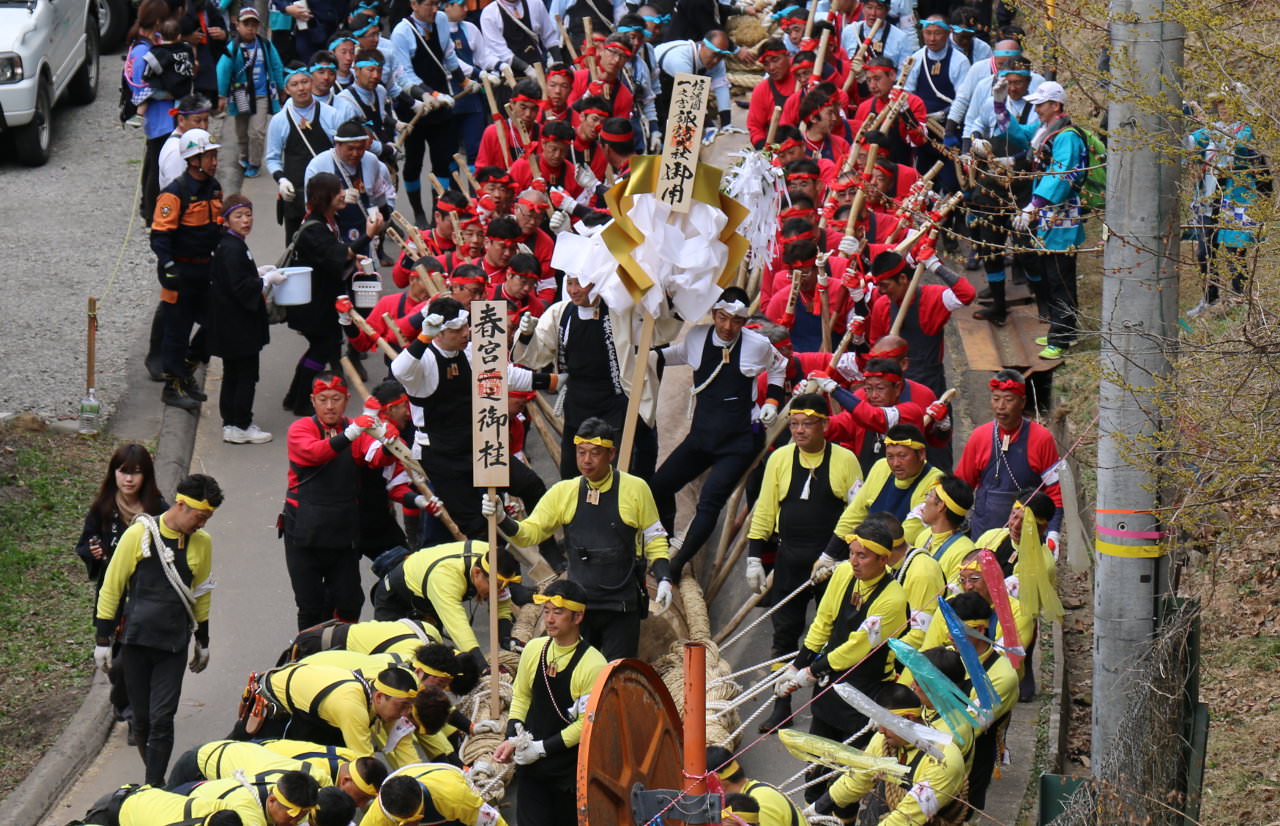
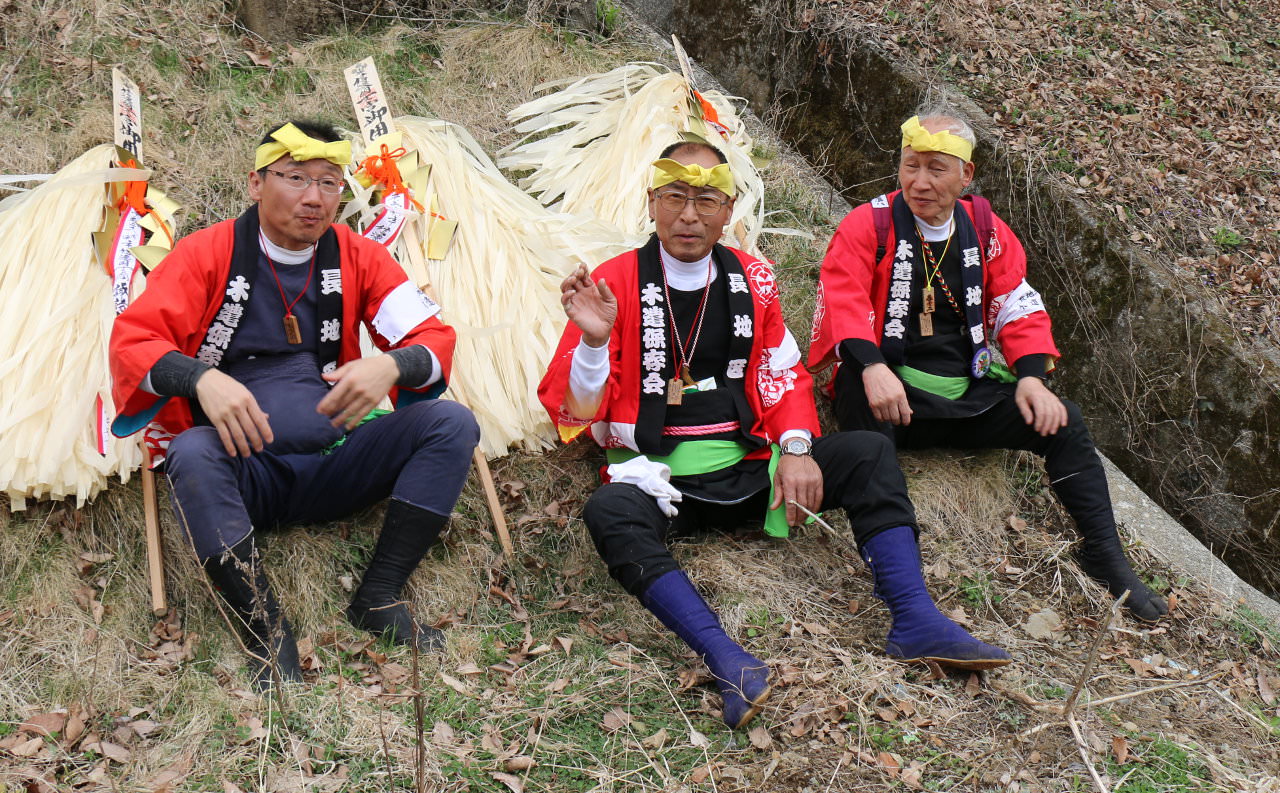
Full program for 2016
Shrine in the south - Kamisha
Yamadashi : The 2, 3 & 4 of April 2016Satobiki : The 3, 4 & 5 May 2016

Red, there are stages of Yamadashi part. Orange, these are the steps Satobiki.
The descent of the slope on the trunk is step 4.
The steps are the same each time.
Yamadashi
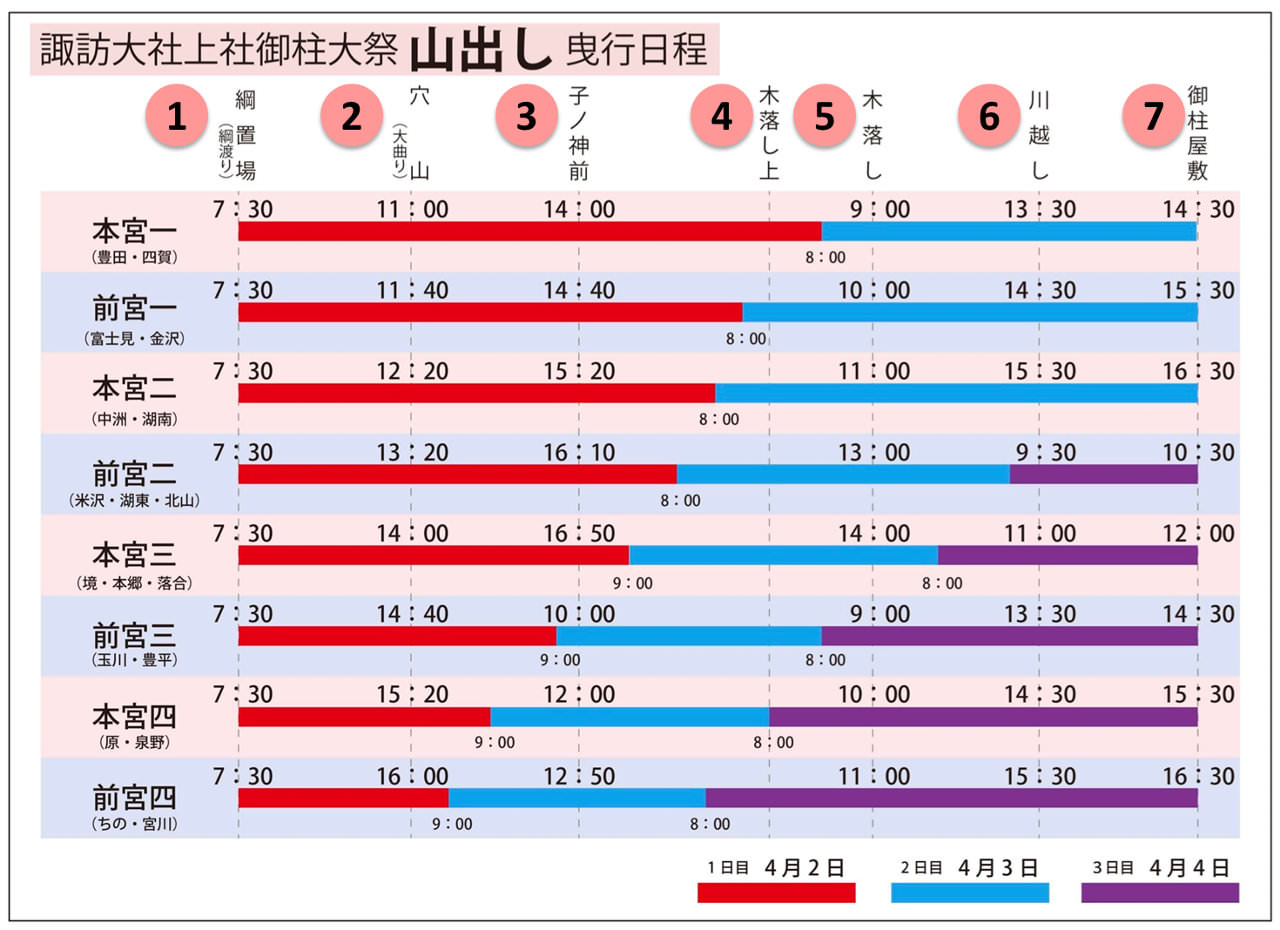
#2 Anayama no Omagari (穴山の大曲)
#3 Nenokami mae (子之神前)
#4 & 5 Kiotoshi (木落とし) : This is the descent. This is probably what most interests you.
#6 Kawagoshi (川越し)
#7 Onbashira Yashiki (御柱屋敷)
Satobiki
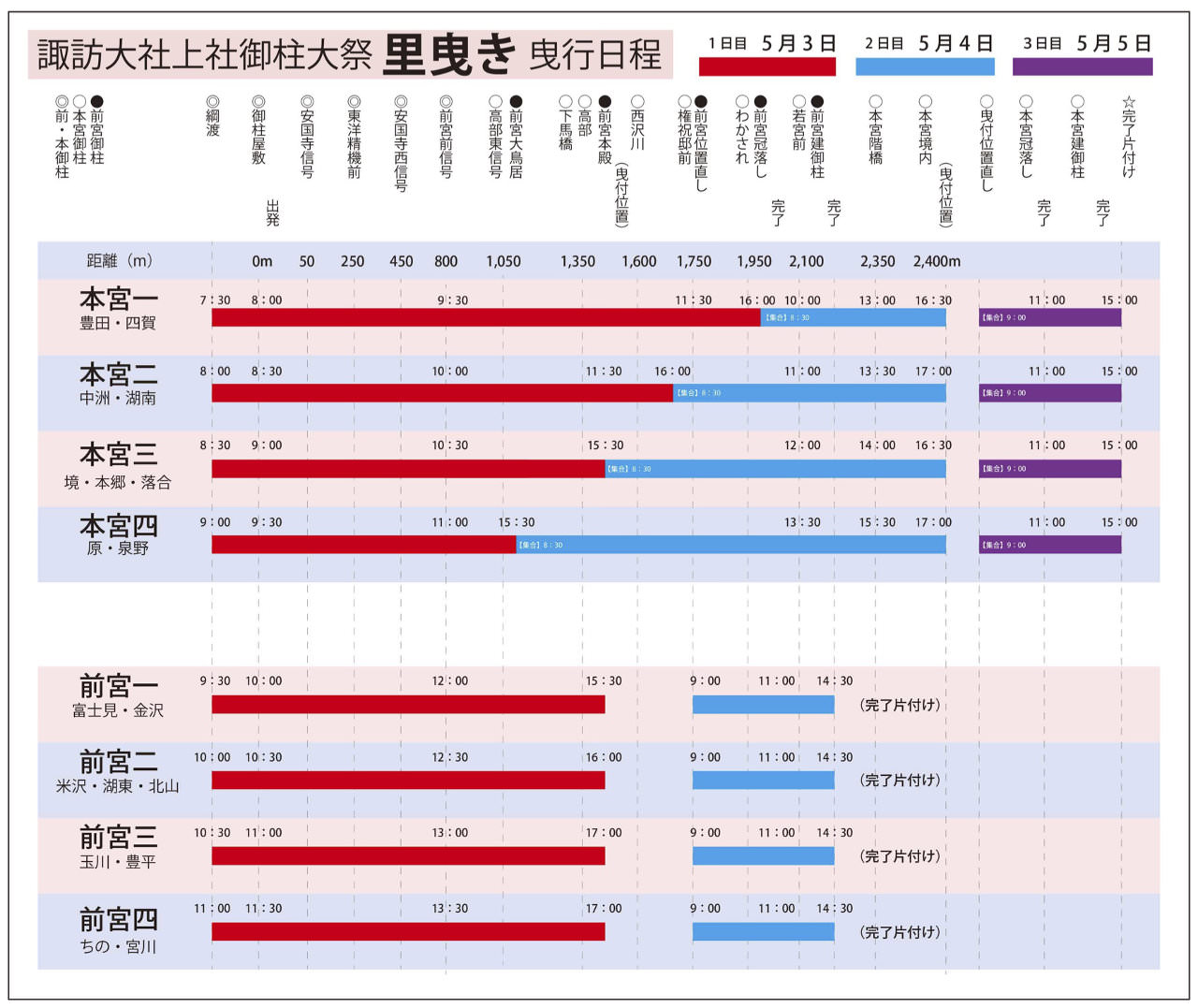
This part is probably not the most interesting if you come from far. it is better to focus on the descent of the tree trunk which remains the most crazy to see.
Shrine in the north - Shimosha
Yamadashi : The 8, 9 & 10 of April 2016Satobiki : The 14, 15 & 16 May 2016

Dark blue, there are stages of Yamadashi part. Light blue, these are the steps for Satobiki.
The descent of the slope on the trunk is step 3!.
The steps are the same each time.
Yamadashi

#3 Temple Yokitatesha (佁立社)
#4 Omagari (大曲り)
#5 & 6 Kiotoshi (木落し上 & 木落し時間) : It is the descente. It is probably what interests you the most
#7 & 8 Arrival (注連掛着 & 解散)
Satobiki

This part is probably not the most interesting if you come from far. it is better to focus on the descent of the tree trunk which remains the most crazy to see.
TipsThe Kamisha part is at the south of the lake, near the Chino Station. And the Shimosha part is in the north of the lake, near the Kami-Suwa Station.
People will be at the station to guide you and give you maps.
Usefull information
To get there with common transportation
Go to the Shrine in the South (Kamisha) in common transporation
From Shinjuku (Tokyo) - Total Fare : 5510 yensGo to the Shrine in the North (Shimosha) in common transporation
From Shinjuku (Tokyo) - Total Fare : 5380 yensPrice
Entrance fee : freeTickets to access and watch the descente : 3000 yens







